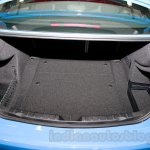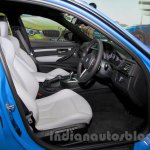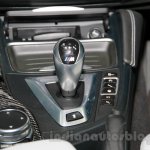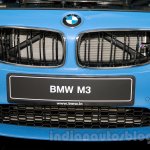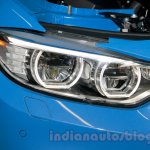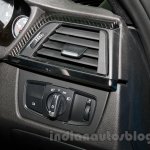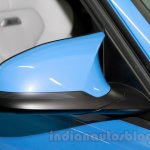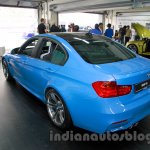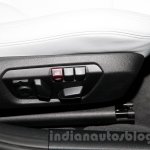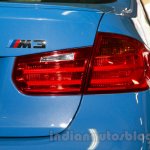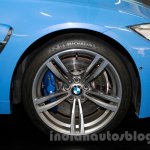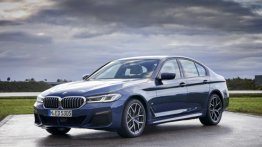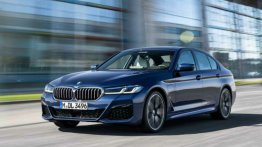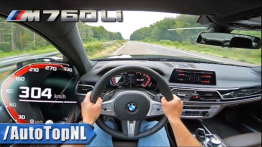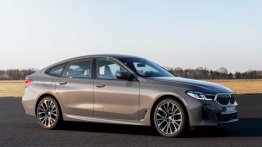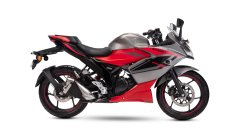“2014 is the year for BMW M in India”, Mr. Philipp von Sahr, president of BMW India, told reporters earlier this year at the Auto Expo which witnessed the showcase of the BMW M6 Gran Coupe. And what a year it has been for the nearly-half-a-century old performance brand from Germany.
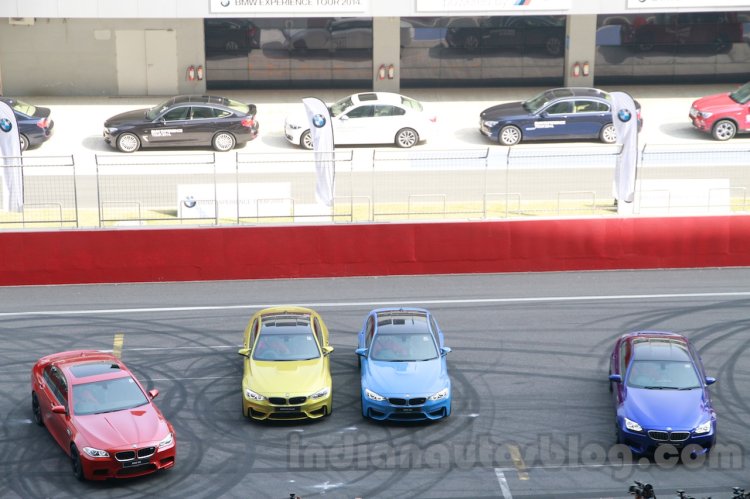
This year saw the launch of the M6 Gran Coupe, the refreshed M5, and just recently the new M3 Sedan and M4 Coupe, bringing the total tally to four new M models in a not-so-performance savvy country like India. Indian Autos Blog was invited to sample the new M3 and M4 at the Buddh International Circuit last month, and here’s what we think of these new Beemers based on a short drive experience.
First up, we got the keys to the M4 Coupe which is essentially the coupe version of the M3 Sedan. BMW’s new notorious nomenclature has ensured the demise of the ‘M3 Coupe/Convertible’ nameplate, and what you get is an angrier looking version of the 4 Series instead.
Even before you start these cars, the first thing that hits you is just how easy-to-use the controls are, and how ordinary the interiors seem to be for one that costs INR 1.2 crore. The steering for example does without electrical adjustment, but anything that saves a few milligrams can be justified, is our guess. Otherwise, the cabin is identical to the regular 3 Series save for the M gearlever, steering wheel and carbon-trimmed center console.
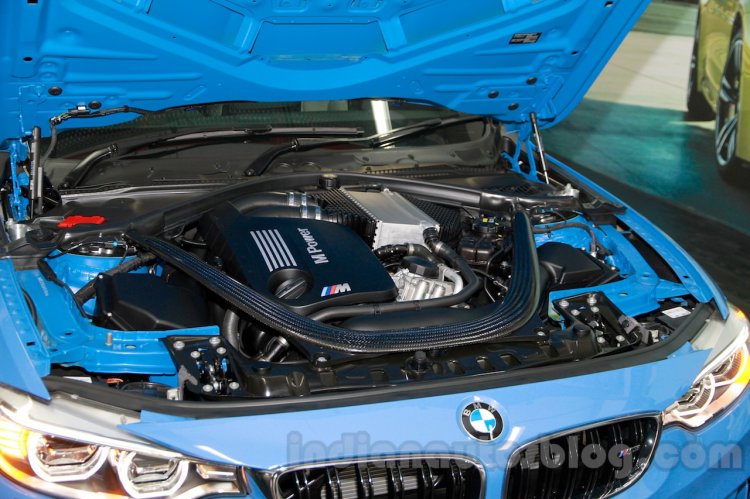
Power for the new M models come from a newly-developed 3.0-liter M TwinPower Turbo inline six-cylinder engine which is capable of producing 431 hp between 5,500-7,300 rpm and 550 Nm of torque between 1,800-5,500 rpm. This, BMW say, is an improvement of nearly 40 percent compared to the previous generation M3/M3 Coupe, and also reduces CO2 emissions by 25 percent.
With the seven-speed M double clutch transmission (standard on the Indian car), both cars do the sprint from 0-100 km/h in 4.1 seconds and achieve a top-speed electronically limited to 250 km/h. In a straight line, the dash to 100 km/h and beyond comes up within those claimed figures, and the initial apprehension one may have for a downsized turbocharged unit (over the previous car’s naturally aspirated V8) is done away within those 4.1 seconds.
That being said, there is a perceptible lag in the lower region of the powerband, for which the 7-speed unit is to blame slightly as well. On the main straight of the circuit, the new Ms had no trouble inching close to their limited 250 km/h top-speed. So much so that all our braking into Turn 4 was carried out in the very last meters of the track.
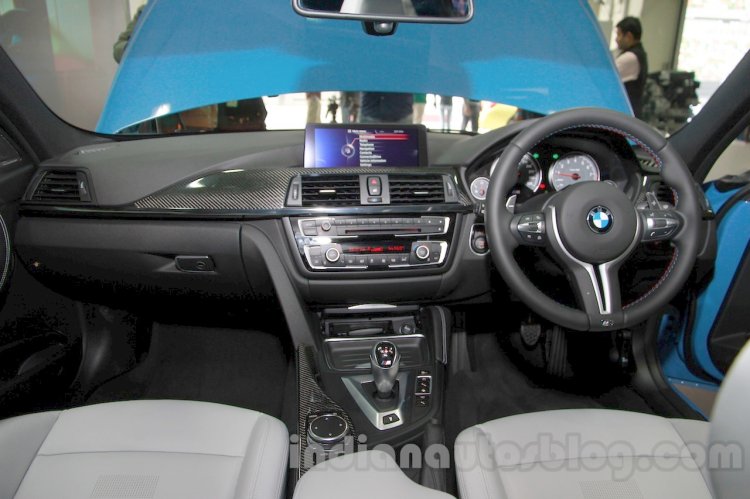
Speaking about braking, the four-piston discs at the front and the twin-piston discs at the rear do a spectacular job of shedding speed. For its part, the ABS kicks in precisely just when its needed, giving the driver the sense that he’s in control for the most part.
Getting back to power again, as the saying goes, there can be no substitute for pure displacement. And proving that point was the pace car which happened to be a BMW M5 with a 4.4-liter V8 churning 560 horses. It would be wrong to compare our 3.0-liter units to the M5’s 4.4-liter, but the way the M5 shot forward put things in a relative perspective of where the M3/M4 stand in hierarchy.
Power aside, the highlight of a true BMW M model lies in the way it handles, the way it feels to the driver. Personally, several journalists (me included) are of the opinion that the new M5 is a bit of a handful, and doesn’t feel as agile as the Chris Bangle-designed E60 M5.
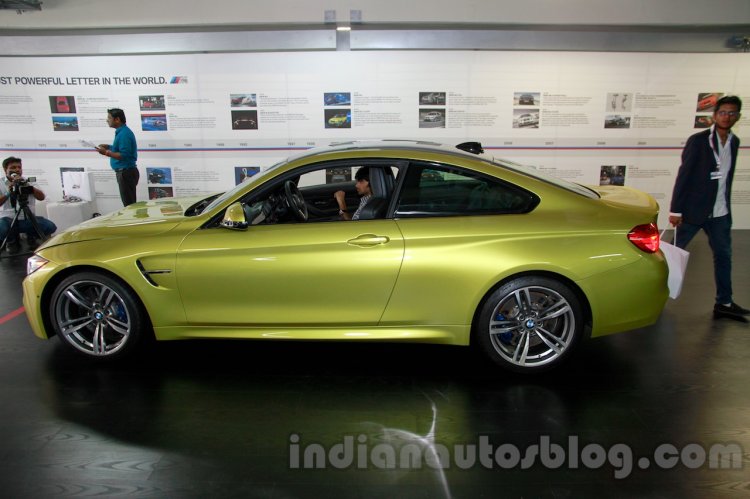
On the new M3 and M4, the news is rather good on this front. While its annoying to know that the exhaust note of these cars is artificially synthesized through the speakers, the more important aspects of these cars have been handled much more seriously by BMW.
The weight, for example, has been restricted to under 1,500 kg (the M4 Coupe weighs 1,497 kg) and this was reflected as soon as we exited the pits onto Turn 1. The steering, which feels a bit artificially weighed up at certain places, does a fantastic job of turning, and it takes just a couple of laps to figure out precisely how many locks of steering input you need.
The legendary 50:50 weight distribution BMW is known for still holds ground on the new M3 and M4, despite competitors claiming they’ve a better setup with their 40:60 split. To put things in a nutshell, the new Ms feel like high-performance go-karts which is as high as a praise can get for sportscars in this segment.
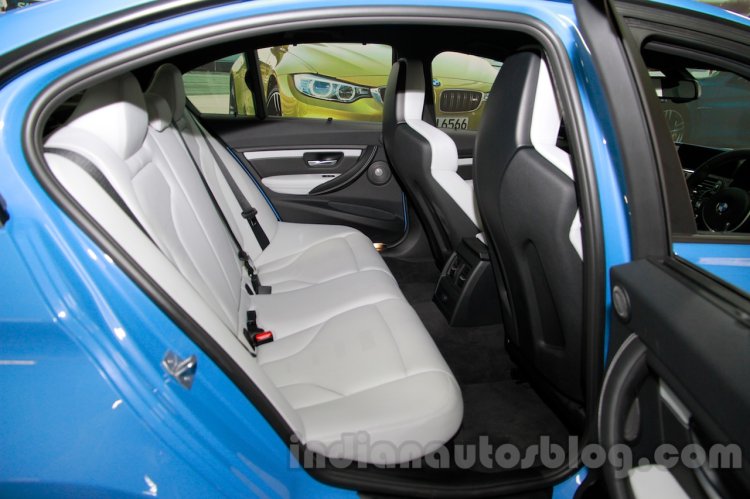
Priced at INR 1.218 crores for the Coupe and INR 1.198 for the Sedan (ex-Showroom), the M3 and M4 are not exactly what you would call cheap. The base Jaguar F-Type costs INR 1.21 crores, the Audi RS 7 comes at INR 1.28 crores, the Mercedes E63 AMG at INR 1.29 crores and the SLK 55 AMG (which has a naturally aspirated V8) costs INR 1.25 crores. Clearly, there are plenty of options for a performance car in a budget of under 1.3 crores.
At the end, two things cinch the deal towards the Beemers. The first being that the M3 and M4 are the best compromise at having an everyday usable performance car if you don’t wish for a performance SUV.
The next highlight being the cars themselves: You get your money’s worth of technology. Both cars feature a carbon roof - unheard of in this segment - which has been a major contributor in shaving 80 kg compared to the previous generation models. More carbon fiber bits are to be found in the propeller shaft and drive shaft of these cars, which on their own are lighter by 40 percent over the previous model’s components. Putting the 'What diamonds are to women, carbon-fiber is to a car enthusiast' equation, that’s a lot of lightweight material in this class of car.
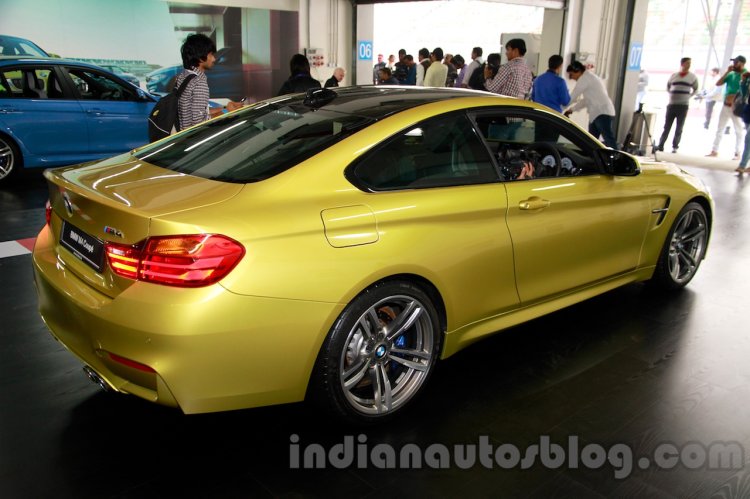
At the end of the day, if we had to take one of these cars home with us, it would be a tough job choosing between the M3 and M4; the M5 wouldn’t even be in consideration, that's just how good the smaller Ms are.
On the one hand, the M3 strikes on the appeal of its normality - a 5-door sedan for five days of the week, and a lightweight sportscar on the weekends. Here in lies the story of how the first generation M3 came into existence, and this Jekyll-and-Hyde character is exactly what excites a few of us. The M4 Coupe, on the track, is slightly more engaging to drive, though getting in-and-out of the rear seats is a squeeze. With a mere INR 2 lakhs separating these two, prospective buyers will have a hard time deciding between them.
Right now, the new M3 and M4 have no direct competitors as Mercedes pulled the plug on the old C63 AMG, and Audi doesn’t offer the RS 4 in India. However, as early as next year, expect Mercedes-Benz India to launch the new C63 AMG in India.
